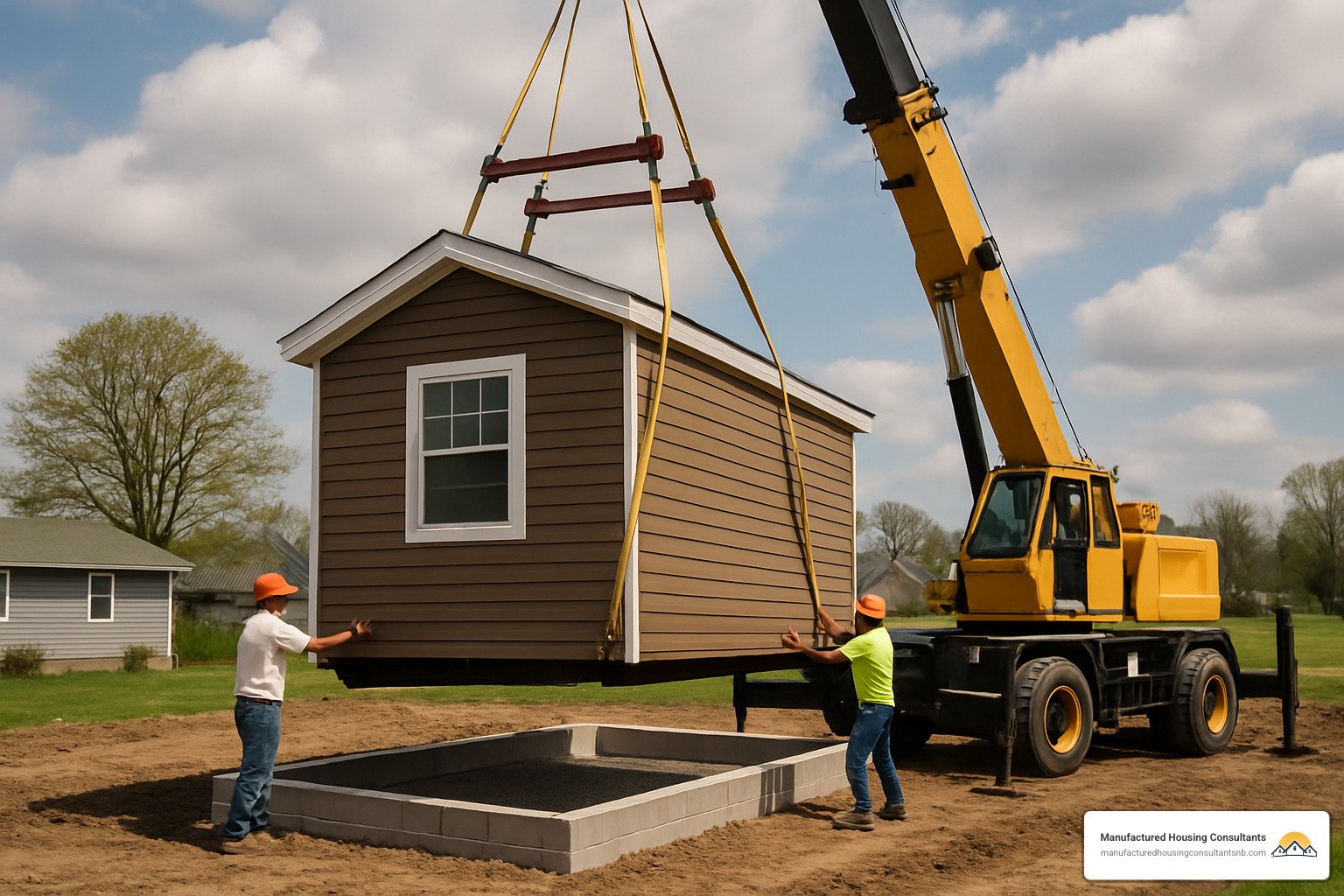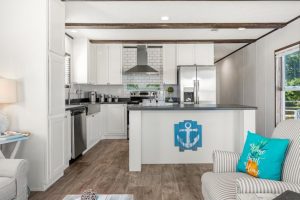The Complete Guide to Comparing Manufactured Tiny Homes
Compare Manufactured tiny homes, benefits, costs, and buying tips. Discover your affordable, sustainable lifestyle with this complete guide!
Why Manufactured Tiny Homes Are Revolutionizing Affordable Housing
Manufactured tiny homes are factory-built dwellings typically under 600 square feet that combine affordability, quality construction, and lifestyle freedom. Here’s what you need to know:
Key Features:
- Size: 217-800 square feet (plus loft space)
- Cost: Up to 40% savings vs custom builders
- Build Time: 3-4 months vs 6-12 months for stick-built
- Financing: 30-year mortgages available (unlike many tiny homes)
- Standards: Built to HUD or ANSI codes for safety and durability
Popular Models:
- Single-section: 400-800 sq ft
- Park Model RVs: ANSI 119.5 certified
- Modular tiny homes: Permanent foundation options
The tiny home movement has exploded as people seek affordable alternatives to traditional housing. Rising home prices and a desire for simpler living have made manufactured tiny homes an attractive solution for first-time buyers, downsizers, and those wanting financial freedom.
As one satisfied customer shared: “I researched many manufacturers around the country, and I loved that Tumbleweeds are green built and RVIA certified.”
Unlike custom-built tiny homes that can take over a year to complete, manufactured versions offer consistent quality, faster delivery, and often better financing options. Major builders complete over 3 homes per week, shipping nationwide to meet growing demand.
These homes maximize every inch through smart design – think large windows for natural light, lofted bedrooms, hidden storage, and multi-purpose spaces. Many include full kitchens, bathrooms, and even laundry hookups, proving you don’t have to sacrifice comfort for affordability.

Manufactured tiny homes terms to remember:
Manufactured Tiny Homes 101 & Comparison

What Is a Manufactured Tiny Home?
Manufactured tiny homes are the perfect middle ground between a travel trailer and a traditional house. These factory-built homes are constructed on a permanent steel chassis, giving you quality construction with the flexibility to move if needed.
The magic happens in controlled factory environments where skilled craftsmen use assembly-line techniques. No more worrying about rain delays or materials sitting out in the weather! This controlled process ensures every home meets the same high standards.
Understanding the codes: HUD Code homes are built to federal standards for more permanent living, while ANSI 119.5 certified park models are technically RVs but make fantastic tiny homes. Some builders also offer RVIA certification, which means your home is street-legal for transport anywhere.
The steel chassis foundation provides flexibility. Unlike modular homes that need a permanent foundation right away, your manufactured tiny home can be placed temporarily while you figure out your long-term plans.
Here’s how different building types stack up:
| Feature | Manufactured | Modular | Park Model | Stick-Built |
|---|---|---|---|---|
| Build Location | Factory | Factory | Factory | On-site |
| Foundation | Steel chassis | Permanent | Trailer/chassis | Permanent |
| Size Range | 217-800 sq ft | 400-2,400 sq ft | 400-800 sq ft | Unlimited |
| Mobility | Yes | No | Yes | No |
| Build Time | 3-4 months | 4-6 months | 2-3 months | 6-12 months |
| Cost Savings | 40% | 20-30% | 35% | None |
| Financing | 30-year mortgage | 30-year mortgage | RV/chattel | Traditional |
Factory construction brings serious advantages beyond just speed. Manufacturers buy materials in bulk, use specialized equipment, and work rain or shine. As one industry expert put it: “Our deep investment in technology, sourcing and supply chain optimization allows us to manufacture homes with uncompromising quality and cost.”
Key Benefits & Design Secrets
The real magic of manufactured tiny homes isn’t just their size – it’s how they deliver so much value in such a compact package. These aren’t your grandmother’s mobile homes. Today’s tiny homes are architectural marvels that prove good things really do come in small packages.
The 40% cost savings isn’t just marketing. It’s real money in your pocket thanks to bulk purchasing power, assembly-line efficiency, and zero weather delays. While custom builders are waiting for materials and dealing with rain delays, factory homes keep rolling off the production line.
Time is money, and manufactured tiny homes save you both. That 3-4 month build time means you could be sipping coffee in your new home while your neighbors are still arguing with contractors.
Smart design secrets make these small spaces feel surprisingly spacious. Large windows aren’t just pretty – they’re strategic. In homes under 300 square feet, big glazed openings create an open, airy feeling. Low-E, dual-pane windows come standard, so you get those views without the energy bills.
Loft spaces are pure genius – they effectively double your usable space without counting toward square footage. Most people sleep upstairs and live downstairs, creating natural separation between rest and activity areas.
Hidden storage solutions turn every nook and cranny into useful space. Storage under stairs, inside walls, and even built into furniture. Custom bookcases aren’t just for books – they hide everything from games to seasonal clothes. Laundry hookups can be tucked into utility closets or bathroom corners.
Energy efficiency in these homes often beats traditional houses. R-22 walls, R-33.5 ceiling, and R-30 floor insulation creates a thermal envelope that keeps you comfortable year-round. Closed-cell foam insulation doesn’t settle or compress, and smart thermostats help optimize your energy use.
The Davis Family shared their experience: “We customized our Aspen model to balance family comfort and B&B charm. The team went well beyond our expectations to give us a beautiful, high-quality tiny home that we are very happy to live in.” Customer Testimonial – Davis Family
Manufactured Tiny Homes vs Other Builds
When choosing between different building methods, manufactured tiny homes consistently come out ahead in ways that might surprise you. The factory advantage goes deeper than just convenience.
Durability gets a boost from factory construction because these homes must survive highway transport. That means steel ladder-frame construction with all-steel studs, closed-cell foam insulation that won’t settle over time, and 26-gauge galvalume metal roofing that resists corrosion.
Quality control in a factory setting beats on-site construction every time. Multiple inspections happen at each build stage, materials stay dry and protected, and workers use specialized tools. Consistent material quality through bulk purchasing means no surprises.
Energy performance often surprises people. Factory-built homes typically have tighter construction tolerances, which means fewer air leaks and lower energy bills. Factory-installed insulation eliminates thermal bridging, and high-performance windows get installed with precision.
Customization without custom costs might be the biggest advantage. You’re not stuck choosing between expensive custom builds and cookie-cutter production homes. Standard floor plans accept customizable finishes, add-on packages handle specific needs like off-grid options, and you can modify layouts during the design phase.
Space-saving innovations have been perfected by manufacturers who build dozens of small homes. Flex spaces serve multiple purposes throughout the day. Built-in entertainment centers eliminate bulky furniture, and utility rooms combine laundry, storage, and even pet washing stations.
For detailed floor plan options that maximize every square foot, check out our guide to Tiny Home Floor Plans.
Buying, Financing & Living in Manufactured Tiny Homes: Conclusion

Step-by-Step Purchase & Installation Roadmap
Buying a manufactured tiny home is more straightforward than you might think – and definitely simpler than the traditional home-buying maze.
Getting started with your design consultation is where the magic begins. Most manufacturers offer free consultations where they’ll sit down with you to understand your dreams, your budget, and your timeline. This isn’t a high-pressure sales pitch – it’s more like having coffee with a friend who happens to be really good at making small spaces work beautifully.
During this phase, you’ll explore floor plans and discuss customizations. Maybe you need a dedicated office nook, or perhaps you’re planning to live off-grid and need special electrical setups.
The financing conversation might surprise you with how many options are available. Unlike traditional tiny homes that often require cash purchases, manufactured tiny homes open up a world of financing possibilities. You can secure 30-year mortgages for modular tiny homes that will sit on permanent foundations, making your monthly payments surprisingly affordable.
If you’re planning to keep your home mobile, chattel loans offer 15-20 year terms that work well for homes staying on their chassis. Military families often find that FHA and VA loans are available for qualifying models. For RVIA-certified park models, RV financing typically offers 10-15 year terms with competitive rates.
Factory construction takes about 3-4 months, but you’re not left wondering what’s happening. Many builders offer virtual inspections so you can watch your home come together from anywhere in the country.
When delivery day arrives, it’s honestly one of the most exciting days you’ll ever experience. Professional transport teams handle getting your home to your site (usually included up to 100 miles), and then comes the satisfying moment of watching your home get positioned exactly where you want it.
The entire timeline from initial consultation to move-in day typically runs 2-4 months total. That’s lightning-fast compared to traditional construction that can drag on for over a year.
For those considering Texas as their tiny home destination, our Buy a Tiny House Texas guide covers all the state-specific details you’ll need to know.
Maintenance, Value & Community Life with Manufactured Tiny Homes
Living in a manufactured tiny home feels surprisingly similar to living in any well-built home, just with a few unique considerations that quickly become second nature.
Keeping your home in top shape requires the same attention you’d give any home, with a couple of tiny-home-specific touches. Annual roof and sealant inspections are crucial, especially if your home might ever hit the road again. Think of it as giving your home a yearly physical – checking window seals and roof seams takes just a few hours but prevents big problems.
If your home stays mobile-ready, chassis maintenance means occasionally checking axles, tires, and trailer components. Most owners find this oddly satisfying – like maintaining a classic car that happens to be your house.
Your HVAC system will probably be the most efficient you’ve ever owned. Because these systems are properly sized for your space, they run more efficiently and last longer. Just change those filters regularly and schedule annual servicing.
Moisture control matters more in smaller spaces, but it’s easily managed with proper ventilation. Modern manufactured tiny homes are designed with this in mind, so you’re not fighting the space – you’re working with smart engineering.

Energy costs are where tiny home living really shines. With R22 walls, R33.5 ceiling insulation, and Low-E windows, most owners see energy bills that are 60-80% lower than traditional homes. We’re talking monthly utility costs of $45-85 instead of $150-250.
Resale value is looking promising as the market matures. Well-maintained manufactured tiny homes are holding their value much better than RVs, and with demand still outpacing supply in most areas, early indicators suggest these homes are a solid investment.
Community living has exploded in ways that would have seemed impossible just a few years ago. Over 250 dedicated tiny home communities and RV parks across the country now welcome tiny home residents. These aren’t just parking lots – they’re real communities with shared gardens, workshops, and social spaces where neighbors actually know each other.
Many communities work directly with local governments to create tiny-home-friendly zoning, solving one of the biggest challenges facing the movement. Some even offer shared amenities like community kitchens for big gatherings, workshops for projects, and gardens where everyone can grow food together.
Off-grid living is absolutely possible with the right setup. Solar panel packages with battery storage, composting toilets, greywater systems, and propane appliances can make your tiny home completely self-sufficient.
The stories from real owners are consistently positive. One Alaska resident told us, “Living tiny has shown us what we value most, especially that we value family.” Another owner shared, “I wanted to live a greener lifestyle,” and found that tiny living naturally led to more sustainable choices.
Working with Manufactured Housing Consultants means you get access to 11 top manufacturers with our guaranteed lowest prices. We’re based right here in New Braunfels, Texas, and we offer comprehensive financing assistance, land improvement coordination, and local zoning guidance. Think of us as your tiny home sherpa – we’ve been down this path many times and know how to avoid the pitfalls.
The manufactured tiny home market keeps evolving with new innovations in space efficiency, energy performance, and smart home technology. Whether you’re downsizing, seeking financial freedom, or wanting a vacation retreat, these homes offer a practical path to homeownership without the crushing debt that traditional homes often require.
For environmentally conscious buyers, our Affordable Eco-Friendly Modular Homes combine sustainability with affordability in ways that make both your wallet and the planet happy.
The tiny home lifestyle isn’t just about square footage – it’s about choosing experiences over possessions, financial freedom over debt, and intentional living over mindless accumulation. Manufactured tiny homes make this lifestyle accessible to regular people with regular budgets, combining the dream of tiny living with quality construction, reasonable financing, and professional support every step of the way.


